Adaptive learning is a powerful tool that has revolutionized the education industry. It is a teaching method that uses technology to personalize the learning experience for each student. By leveraging data, algorithms, and artificial intelligence (AI), adaptive learning systems can provide students with a unique learning experience tailored to their needs.
Edtech systems are at the forefront of adaptive learning, providing teachers with the tools to create a more effective classroom experience. These systems can help teachers identify areas where students are struggling and provide targeted interventions to help them improve. They can also help students learn at their own pace, providing them with the support they need to succeed.
Adaptive learning and edtech systems are transforming the way we teach and learn. They are making education more accessible, more personalized, and more effective. With the right tools and strategies, educators can create a classroom environment that fosters learning and growth, helping students reach their full potential.

Fundamentals of Adaptive Learning
Defining Adaptive Learning
Adaptive learning is a method of education technology that uses algorithms to adjust the learning experience to the individual student’s needs. This approach to teaching aims to provide personalized learning experiences that cater to each student’s unique learning styles, abilities, and interests. Adaptive learning systems use data analytics and machine learning to identify the areas where a student needs help and provide them with appropriate resources and feedback.
History and Evolution of EdTech
Education technology has come a long way since its inception in the 1960s. The first computer-assisted instruction (CAI) systems were developed in the 1960s and 1970s, but they were expensive and not widely available. With the advent of the internet in the 1990s, online learning became more accessible, and the first learning management systems (LMS) were developed. In recent years, there has been a significant increase in the use of adaptive learning systems in education.
Principles of Personalized Learning
Personalized learning is a student-centred approach to education, considering each student’s unique needs, interests, and abilities. Personalized learning aims to create a learning experience tailored to the individual student’s needs. Adaptive learning is one of the key technologies used to implement personalized learning. The principles of customized learning include:
- Student-centred learning
- Competency-based learning
- Flexible learning environments
- Personal learning paths
- Data-driven decision making
Adaptive learning systems allow educators to create personalized learning experiences that cater to the unique needs of each student. Using data analytics and machine learning, these systems can identify areas where a student needs help and provide appropriate resources and feedback. The principles of personalized learning align with the goals of adaptive learning, making it an effective tool for educators looking to create a more customized learning experience for their students.

Technological Framework
Regarding adaptive learning and edtech systems, the technological framework ensures that students receive a personalized and practical learning experience. This section will discuss the critical components of the technical framework in edtech systems.
AI and Machine Learning in EdTech
Artificial intelligence (AI) and machine learning (ML) are two technologies that have revolutionized the edtech industry. AI algorithms can analyze student data and provide personalized learning experiences based on their strengths and weaknesses. ML can help identify student behaviour patterns and provide teachers with insights to improve their teaching methods.
Learning Management Systems (LMS) and LTI
Learning management systems (LMS) are software applications that help manage and deliver educational content. LMS can integrate with other edtech systems through Learning Tools Interoperability (LTI), a standard for incorporating educational tools and systems. LTI allows for seamless integration between different edtech systems, making it easier for teachers and students to access and use other tools.
The Role of UI/UX in Learning Platforms
User interface (UI) and user experience (UX) are critical components of any edtech system. A learning platform’s UI/UX design can significantly impact student engagement and learning outcomes. A well-designed UI/UX can make it easier for students to navigate and use the platform, while a poorly designed one can lead to frustration and disengagement.
In conclusion, the technological framework of edtech systems plays a vital role in providing students with personalized and compelling learning experiences. The use of AI and ML, integration with LMS and LTI, and the design of UI/UX are all critical components of the technological framework that can impact student engagement and learning outcomes.

Adaptive Learning Systems
Adaptive learning systems are educational technologies that leverage data, algorithms, and artificial intelligence (AI) to provide students with personalized learning experiences. These systems continuously monitor student performance, typically through assessments, and subsequently make content adjustments based on the level of progress achieved. Adaptive learning systems have been gaining popularity in recent years due to their ability to provide tailored learning experiences that cater to individual student needs.
Components of Adaptive Learning Technologies
Adaptive learning technologies have several components that provide a personalized learning experience. These components include:
- Assessment: Adaptive learning systems use assessments to determine a student’s current level of knowledge and skills. The results evaluation provides personalized learning paths tailored to the student’s needs.
- Content: Adaptive learning systems provide students with personalized content based on their assessment results. The content targets areas where the student needs improvement and is presented in various formats, including videos, interactive activities, and quizzes.
- Analytics: Adaptive learning systems track student progress and provide feedback to students and teachers. Analytics can help identify areas of strength and weakness and can be used to adjust learning paths as needed.
Examples of Adaptive Learning Software
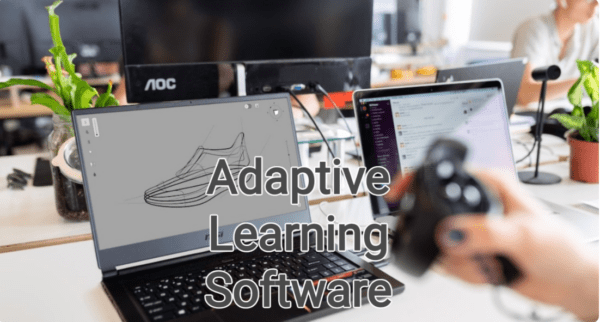
There are several examples of adaptive learning software available in the market. These software solutions are designed to provide personalized learning experiences to students. Some of the popular adaptive learning software include:
- DreamBox Learning: DreamBox Learning is an adaptive learning platform that provides personalized math instruction to students. The platform uses various tools, including games, videos, and interactive activities, to engage students and provide personalized instruction.
- Knewton: Knewton is an adaptive learning platform that provides personalized content to students. The platform uses data analytics to track student progress and deliver customized learning experiences.
- ALEKS: ALEKS is an adaptive learning platform that provides personalized math instruction to students. The platform uses assessments to determine a student’s knowledge level and provides customized instruction based on the results.
DreamBox Learning as a Case Study
DreamBox Learning is a popular adaptive learning software used in several schools across the United States. The software provides personalized math instruction to students and has been shown to improve student performance. In a study by DreamBox Learning, students who used the software for at least 60 minutes per week showed significant improvement in math skills compared to those who did not. The study also found that students who used the software for more extended periods showed more significant improvement than those who used it for shorter periods.
Implementation and Integration
Strategies for Effective Implementation
Implementing adaptive learning systems can be challenging, but ensuring that the implementation process is smooth and effective is essential. One of the most important things to consider is the readiness of your staff and students. Before implementing any educational technology, it is crucial to assess the level of technical expertise among your staff and your students’ digital literacy. Training and support to your staff and students can help them become more comfortable with the technology and increase its effectiveness.
Another strategy for effective implementation is to identify clear goals and objectives for the technology. This will help you determine the most appropriate adaptive learning system and how it will fit into your curriculum. It would be best if you also considered the specific needs of your students and how the technology can be used to meet those needs.
Challenges and Solutions in EdTech Adoption
The adoption of educational technology can be challenging due to a variety of factors. One of the most significant challenges is resistance to change. Some staff and students may resist using new technology, mainly if they are used to traditional teaching methods. To overcome this challenge, it is essential to provide training and support to help staff and students become comfortable with the technology.
Another challenge is the cost of implementing educational technology. Adaptive learning systems can be expensive, and many schools and institutions may not have the budget to implement them. One solution is to seek out grants and funding opportunities to help cover the cost of implementation.
Integrating Adaptive Systems with Curriculum
Integrating adaptive learning systems with your curriculum can be challenging but is essential for the technology to be effective. One strategy is to align the technology with your learning objectives and outcomes. This will help ensure that the technology is being used to support your curriculum and not as a replacement for it.
Another strategy is to use technology to personalize the learning experience for your students. Adaptive learning systems can help identify areas where students are struggling and provide targeted support to help them improve. This can help improve student engagement and motivation, leading to better learning outcomes.
Overall, implementing adaptive learning systems requires careful planning and consideration. By identifying clear goals and objectives, providing training and support, and integrating technology with your curriculum, you can ensure that the technology is effective and benefits your students.
Impact on Learning and Teaching
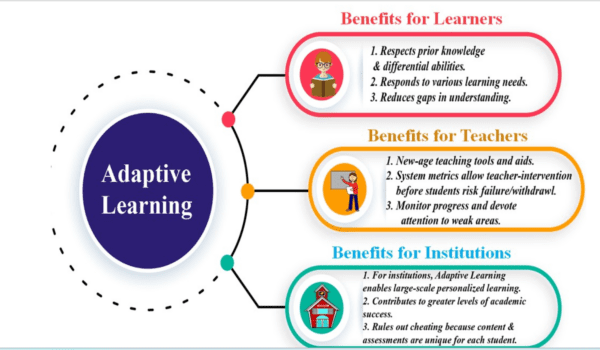
Adaptive learning systems have a significant impact on both learning and teaching. These systems leverage data, algorithms, and AI to provide students with personalized learning experiences. They continuously monitor student performance and subsequently make content adjustments based on the progress achieved.
Improving Student Engagement and Learning Experience
Adaptive learning systems improve student engagement and learning experience by providing personalized content tailored to their learning style and pace. These systems use data and analytics to identify areas where students are struggling and provide them with appropriate resources and support. This approach helps students to stay motivated and engaged, leading to better learning outcomes.
Supporting Teachers and Educators
Adaptive learning systems also support teachers and educators by providing valuable insights into student performance. These systems generate data and analytics that can be used to identify areas where students are struggling and provide targeted instruction and support. This approach helps teachers to personalize their instruction and provide students with the resources they need to succeed.
Analytics and Feedback for Instruction
Adaptive learning systems provide teachers and educators with valuable analytics and feedback that can be used to improve instruction. These systems generate data on student performance, including areas where they are struggling and areas where they are excelling. This information can adjust instruction and provide targeted support to students.
Overall, adaptive learning systems have a significant impact on both learning and teaching. They improve student engagement and learning experience, support teachers and educators, and provide valuable analytics and feedback for instruction. By leveraging the power of data, algorithms, and AI, these systems offer personalized learning experiences that help students succeed.
Emerging Trends in EdTech
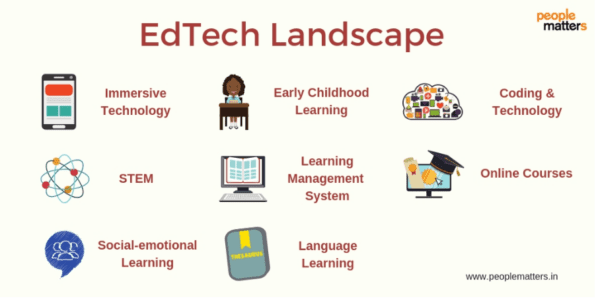
As technology continues to evolve, so does the landscape of education. EdTech has been at the forefront of this evolution, providing new and innovative learning methods. Here are some of the emerging trends in EdTech that you should be aware of:
AR, VR, and Immersive Learning
Augmented Reality (AR), Virtual Reality (VR), and Immersive Learning are transforming students’ learning. With AR and VR, students can immerse themselves in a virtual environment, making learning more engaging and interactive. On the other hand, immersive learning combines traditional classroom learning with virtual simulations, providing a more hands-on approach to education.
Gamification and Game-Based Learning
Gamification and Game-Based Learning are becoming increasingly popular in the world of EdTech. By incorporating game elements into education, students are more engaged and motivated and can learn at their own pace. This approach also allows for personalized learning, as students can choose their learning path and receive instant feedback.
Social Learning and Collaboration
Social Learning and Collaboration are essential components of EdTech. By incorporating social learning into education, students can learn from each other, share their ideas, and collaborate on projects. This approach also fosters a sense of community and encourages students to take ownership of their learning.
In conclusion, these emerging trends in EdTech are transforming the way we learn. Incorporating AR, VR, Immersive Learning, Gamification, Game-Based Learning, Social Learning, and Collaboration into education can provide a more engaging, personalized, and hands-on approach to learning.
Considerations for the Future
As adaptive learning and edtech systems continue to evolve, it is essential to consider various factors impacting their future success. Here are some key considerations to keep in mind:
Privacy, Data Protection, and Ethics
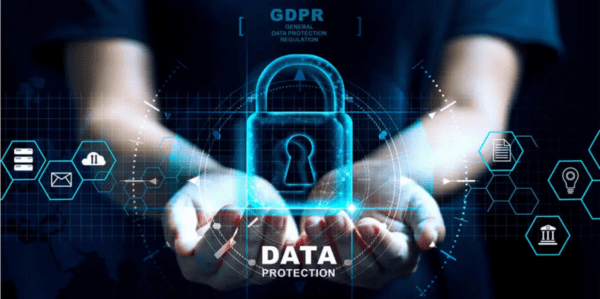
With the increasing use of data in adaptive learning and edtech systems, prioritizing user privacy and data protection is essential. Institutions and companies must be transparent about their data collection practices and ensure their systems comply with relevant data protection regulations. Additionally, ethical considerations must be considered when designing and implementing these systems to ensure they do not perpetuate biases or discrimination.
Scalability and Accessibility in Education
As adaptive learning and edtech systems become more widespread, it is essential to consider their scalability and accessibility. These systems must be designed to work with various devices and internet speeds to ensure that as many people can use them as possible. Additionally, these systems must be scalable so that they can be used by institutions of all sizes, from small schools to large universities.
Predictive Analytics and Personalization
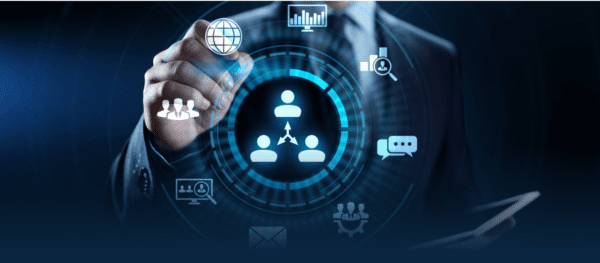
One of the key benefits of adaptive learning and edtech systems is their ability to use predictive analytics to personalize the learning experience for each student. However, it is essential to ensure that these systems do not rely solely on data and algorithms but also consider the human element of education. Institutions and companies must work to balance data-driven personalization and human interaction to ensure that students receive a well-rounded education.
Overall, the future of adaptive learning and edtech systems looks bright. Still, it is essential to remember these considerations to ensure that these systems are ethical, accessible, and practical for all learners.
